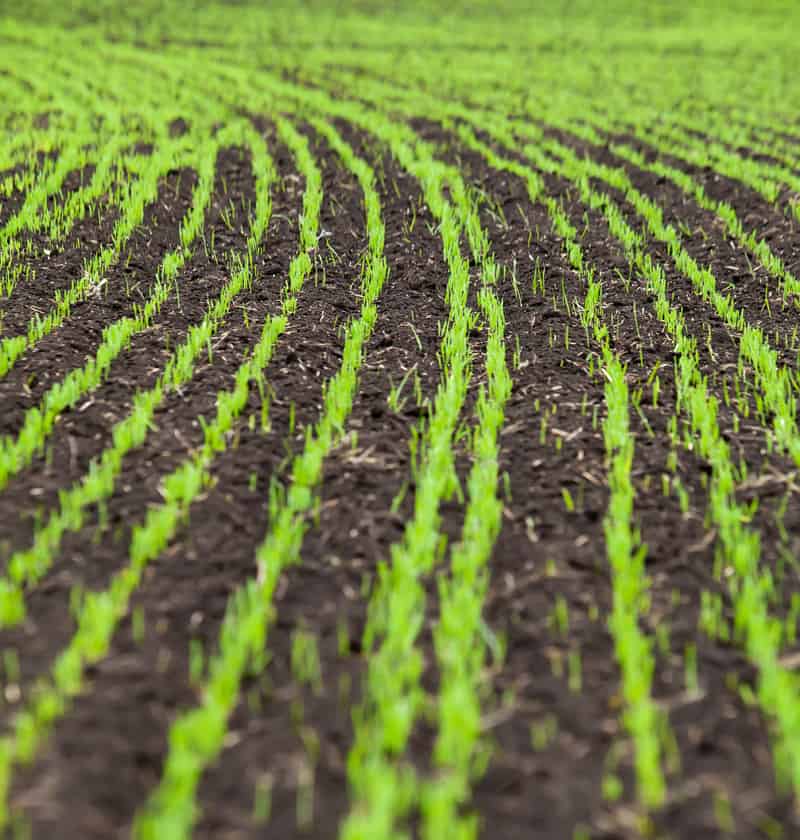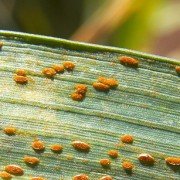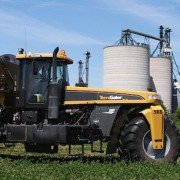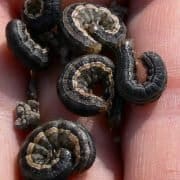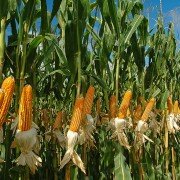Late Planted Winter Wheat
During years when soybeans are harvested later than expected or environmental conditions delay field work, winter wheat is generally skipped in the rotation or planting is rushed. When planting winter wheat later than the recommended planting dates, even more care should be taken to ensure yield potential is not lost.
Planting date
In general, delaying planting past the recommended planting window can cost a producer from 0.6 to 1.1 bu/day. It is best to strive to plant around these dates (See figure 1).
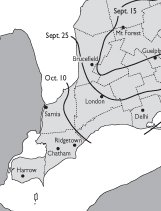
Figure 1: Optimum Planting Dates in Ontario.
Best management practices
Variety Selection
Variety selection does not play as big of a role when planting late as it does when planting early. In general choose a variety that has a good disease package and is known to overwinter well. Certified seed is also recommended because of the guaranteed quality standards.
Seed Treatment
It is essential that later planted seed is treated with a fungicide such as: Dividend XL, Vibrance XL, Raxil, Vitaflo 280, etc. These will help to protect the winter wheat crop from various seed and soil prone fungal diseases.

Plant Population
When planting later the winter wheat plant has less time available to develop roots and tillers. Increasing seeding rates can help, to an extent, overcome this decease of growth and maintain yield potential. The weather in the fall and early winter will greatly determine if the increased seeding rate will actually pay off. Trials from 2005 and 2006 conducted by Ontario Soil and Crop indicate surprising results when seeding wheat very late.
In general wheat should be seeded at 1.5 million seeds/acre when seeded at the optimum timing (this can vary slightly depending on the variety). Increase this rate by 200 000/ week delayed to a maximum of 2.2 million seeds/acre. Ensure to account for the seed size when setting the planter (see chart below).
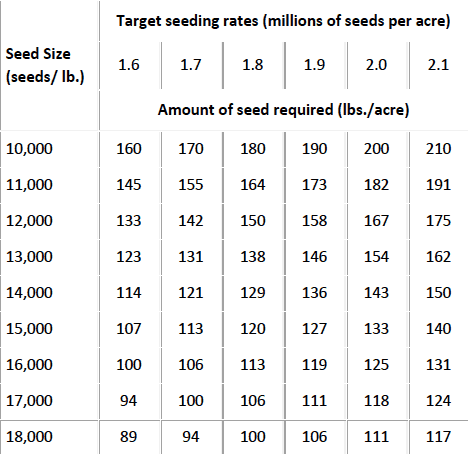
* Seeds per acre ÷ seeds per lb. = lbs. of seed per acre.
Seeding Depth
When planting later it is recommend to plant shallower. It is generally recommended to plant from 1-1.5”. When planting is delayed, a shallow planting allows the plants to emerge faster and gives more time for growth. This increase in growth needs to be weighed against the potential for more winter injury due to the shallow root system. To strike a balance between the risks a depth of 1” is a good target to shoot for.
Fertilization
Winter wheat requires 10 to 25 lbs/ac of nitrogen for good fall development. When planting dates are delayed, extra nitrogen can help promote rapid development as the cooler temperatures will decrease the mineralization of organic matter into plant available nitrogen. In these situations the rate of nitrogen should be increases to 20 to 40 lbs/acre.
In addition to nitrogen, other nutrients should be considered. Wheat has a higher requirement for phosphorus than corn or soybeans. Phosphorus plays a very important role in winter survival and can help the plant tiller in the fall. 10 to 15 lbs/ac applied with the seed is beneficial in low to medium soil test situations. Higher rates can also be applied and worked into the soil to cover the crop removal or help to raise the soil test level.
Potassium is also very important. Though major uptake occurs close to flowering, fall is a great time to apply sources of potassium like Muriate of Potash (0-0-60). Potash should be applied when test levels are lower to build up the soil. When test levels are higher, rates should match the expected crop removal for your yield goal to maintain your soil quality.
| 100 bu/ac winter wheat | Removal rates (lbs./ac) | Build level (ppm)* |
|---|---|---|
| Phosphorus | 135 MAP | <25 |
| Potassium | Straw retained 60 Potash Straw removed 275 Potash | <120 |
Weather
 In the end, weather factors are the most important in determining if later plantings will retain good yield potential. Following these best management practices will help to protect your yield. Watch the forecasts and make a decision as close to the actual planting date as possible. It is strongly recommended to revisit these fields in spring around green up to assess winter kill and populations to determine if the crop should be kept.
In the end, weather factors are the most important in determining if later plantings will retain good yield potential. Following these best management practices will help to protect your yield. Watch the forecasts and make a decision as close to the actual planting date as possible. It is strongly recommended to revisit these fields in spring around green up to assess winter kill and populations to determine if the crop should be kept.
References:
www.ag.ndsu.edu, www.ontariosoilcrop.org/docs/v4cer3.pdf, www.msue.anr.msu.edu, and OMAFRA.


